Curiosities and Challenges about Samba schools
Do you like Samba schools?
Would you like to see more curiosities like these..
Grêmio Recreativo Escola de Samba Unidos de Vila Isabel, or simply Unidos de Vila Isabel, is one of the oldest and most....
Mancha Verde is a Brazilian samba school located in the city of São Paulo. Its origins date back to the organized fan..
Samba schools have their roots in Afro-Brazilian culture and originated in Rio de Janeiro, at the beginning of the 20th....
So.. How about a Challenge on the Best Quiz Platform in the World?
With determination, passion and rhythm, we transform dreams into dance steps
Get to know a little about everything and bet on your knowledge in incredible challenges and duels..
Join the betspot.zone community, accumulate bts (bets) and even compete for prizes..
Discover some interesting facts about Samba schools..
Quiz - Curiosities - Challenge - - Frequently asked questions about Samba schools
Unidos da Tijuca

Unidos da Tijuca is one of the most emblematic samba schools in Rio de Janeiro. Founded in 1931, it originated from the union of blocks in Tijuca, specifically on the hills of Casa Branca, Formiga, Borel and Ilha dos Velhacos. The visual identity of Unidos da Tijuca is marked by the colors blue and yellow-gold, adopted since its foundation. In 1984, the royal peacock was chosen as the school's symbol, replacing the previous one, which was composed of two intertwined hands surrounded by branches of coffee and tobacco.
publicity
The Vitória Régia Samba School

The Vitória Régia Samba School is one of the oldest and most emblematic carnival groups in Manaus, located in the capital of Amazonas. Founded on December 1, 1975, in the residence of "Tia" Lindoca, in Praça 14 de Janeiro, the school is known as the "Cradle of Samba" in the city. Their first rehearsals took place in the courtyard of Tia Lindoca's house and, later, in 1989, they conquered a covered court near the Nossa Senhora de Fátima Church, on Rua Emílio Moreira. Throughout its history, Vitória Régia has accumulated several titles and paid homage to significant aspects of local culture and history in its parades. With official colors of green and pink, inspired by Estação Primeira de Mangueira in Rio de Janeiro, the school is a notable institution not only for its performance at Carnival, but also for its cultural and social importance in the community of Praça 14 and its surroundings.
Vila da Barra is a samba school based in the city of Manaus

Vila da Barra is a samba school based in the city of Manaus, in Amazonas, Brazil. Located on Avenida Brasil, in the Compensa neighborhood, close to the city hall, in the West Zone, it is one of the most vibrant representatives of carnival culture in the region. Founded on May 21, 1995, it had its first official parade in 2008, in the newly created Group 3, winning runner-up with a tribute to the West Zone of Manaus. Over the years, Vila da Barra has gained a solid base of members and fans, becoming a reference in samba culture in Manaus. With a lively drumline, well-rehearsed wings and elaborate floats, Vila da Barra always seeks to impress the public and judges during the parades.
Grêmio Recreativo Escola de Samba Unidos do Alvorada

Grêmio Recreativo Escola de Samba Unidos do Alvorada is one of the traditional samba schools in Manaus, located in the state of Amazonas, Brazil. Founded in 1995, from the former Banda do Jacaré, the school has its headquarters on Rua São Bernardo, close to Prosamim, in the Alvorada neighborhood. Since its foundation, Unidos do Alvorada has been a strong presence at the Manaus Carnival, bringing creative plots and actively participating in local competitions. In its parades, Unidos do Alvorada has already paid tribute to several relevant personalities and themes, such as the toada raiser David Assayag, the UFC fighter José Aldo and northeastern culture.
publicity
The Samba School United Kingdom of Manaus

The Samba School United Kingdom of Manaus is a renowned carnival group based in the city of Manaus, Amazonas. Founded on September 5, 1981, during a meeting of friends in the Morro da Liberdade neighborhood, the school had its origins on Santa Rosa Street, in the residence of one of the founders, known as Pirulito. Initially, it emerged as a street block called Unidos do Morro. Over the years, Reino Unido de Manaus grew and consolidated, becoming a samba school in 1986 and reaching Grupo Especial in 1987, when it adopted its current name. One of the striking features of the United Kingdom of Manaus is its court, known as Terreirão do Samba Mãe Zulmira Gomes, located on Alameda São João. The club is also recognized for its memorable plots, such as the samba about Mãe Zulmira, popularly known as " Axé Mãe Preta".
The Mocidade Independente de Aparecida school

The Mocidade Independente de Aparecida school is affectionately called "Pareca", and has its roots in the neighborhood of Aparecida, South Zone of Manaus. Founded on March 15, 1980, it arose from dissent from Em Cima da Hora, with the wing "Alô, Alô Aparecida". Zezinho Pacheco, an important figure in the community, was instrumental in founding the school. The school had its origins in Boteco do Armindo, a place in the Aparecida neighborhood. Its founders included names such as Arthurzinho, César Gato, Chico da Mocidade, and others. With César Bandeira as first president, the school was recognized by the neighborhood's residents in a plebiscite. Since its debut parade in 1981, the school has shown its strength.
The Dragões do Império Samba School

The Dragões do Império Samba School is one of the most important and traditional associations of Carnival in Manaus, Amazonas, Brazil. Founded on April 26, 2003, in the neighborhood of São Jorge, West Zone of Manaus, the school aims to rescue and promote carnival traditions in the region. The school's symbol is a dragon, representing strength and grandeur, in line with the energy and spirit of the São Jorge community. Since its founding, Dragões do Império has stood out for its participation in Carnival parades, celebrating local culture, history and traditions of the region. Over the years, the school has won several titles and awards, demonstrating its excellence and dedication in the world of samba.
publicity
Samba School Andanças de Ciganos

Samba School Andanças de Ciganos is a notable institution in the carnival scene in Manaus, Amazonas. Founded in the 1970s as a carnival block, its origins were associated with the Bloco do Macacão, created in 1974. However, it only adopted the name Andanças de Ciganos in 1976. Its headquarters are located in the neighborhood of Cachoeirinha, which may be related with gypsy camps in the region during the 70s or the popularity of the song "Andanças" at the time. Initially as a block, Andanças de Ciganos had a remarkable performance, achieving consecutive victories in carnivals between 1976 and 1980, with two runners-up finishes afterwards. In 1984, he transitioned to a samba school.
Grande Família

Grande Família, one of the oldest and most traditional samba schools in Manaus, has its headquarters on Rua Careiro, in the São José I neighborhood. Its symbol is a rooster and its characteristic colors are red and white. The school's history began on March 19, 1986, when Jorge Walter Barroso, known as Jorginho, had a flat tire near Jaqueirão, an old bar frequented by samba dancers in Praça 14 de Janeiro. After some lively conversations, Jorginho became interested in samba and decided to take this passion to the São José neighborhood, in the East Zone, where he founded the A Grande Família block. The group, which was initially a small carnival event, gained prominence at the Manaus Carnival in 1994, when it was invited by the Associação do Grupo Especial das Escolas de Samba de Manaus (AGEESMA) to open the Grupo Especial parade with a plot inspired by the Legend of Guarana.
Acadêmicos do Tucuruvi

Acadêmicos do Tucuruvi is a traditional samba school in the city of São Paulo, founded on February 1, 1976 by a group of residents from the Tucuruvi neighborhood. Since then, the school has been building a remarkable history in the São Paulo carnival scene. Its symbol is a grasshopper, a tribute to the neighborhood itself, as "Tucuruvi" in Tupi means "green grasshopper". Initially, the school's colors were black and yellow, but they were changed in the early 1980s to blue and white, which are the current colors. Over the years, the school has gone through ups and downs, but has always maintained its tradition and cultural identity.
publicity
Império de Casa Verde, a group from São Paulo

Império de Casa Verde, a group from São Paulo, was born in 1994, founded by dissidents from Unidos do Peruche. Its rapid rise in the São Paulo Carnival culminated in the first title in the Special Group in just eleven years of existence, three of them in the main group. At the end of 1993, residents and traders of Casa Verde, led by Daílson "Caçapa", came together to create a new samba school in the neighborhood. Francisco Plumari Júnior, known as "Chico Ronda", was chosen as honorary president and patron of the school. The coat of arms and flag were designed by carnival artist Raul Diniz. The meetings took place at the Saldanha da Gama Association and, later, at the entity's first official headquarters, established on February 27, 1994. The inaugural parade was in 1995, under the presidency of Carlos Alberto de Souza, resulting in the school's first title.
The Águia de Ouro Samba School

The Águia de Ouro Samba School, located in the Pompeia neighborhood in São Paulo, is an association known for its vibrant history and notable participation in the São Paulo Carnival. Founded on May 9, 1976, the school adopted the eagle and the colors blue, gold and white as its symbol. The Águia de Ouro originated from the union of players from the Faísca de Ouro football team, who gathered to do samba among a departure and another. Led by Gilson Carriuolo, Antonio and Maíco, former members of the Pérola Negra Samba School, decided to found GRES Águia de Ouro in 1976.
GRCES Gaviões da Fiel Torcida
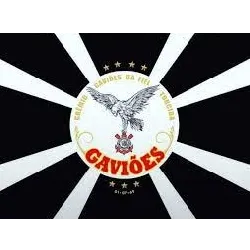
GRCES Gaviões da Fiel Torcida, the largest organized fan base for Sport Club Corinthians Paulista and also a samba school in São Paulo, was founded in 1969 and is based in the Bom Retiro neighborhood. With more than 140 thousand members, it was a pioneer in Brazil in establishing an internal administrative structure with statutory rules. Gaviões integrates Carnival and football departments into a single entity. The headquarters, initially in a garage in the North Zone, moved to Rua Santa Efigênia in 1974, becoming the entity's first headquarters. From 1975 onwards, fans began to parade in the city's official block parade.
publicity
Mocidade Alegre
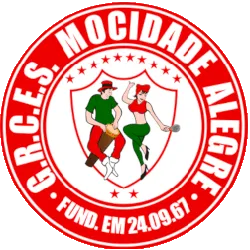
Mocidade Alegre is one of the most renowned samba schools in São Paulo, with a rich and vibrant history in the Carnival scene. Founded in 1967 by Juarez da Cruz and his brothers, the school had its origins in a group of revelers who paraded through the city's streets in the 1950s, initially under the name "Bloco das Primeiras Mariposas Recuperadas do Bom Retiro". Since its founding, Mocidade Alegre has stood out for its creativity and innovation in its parades, often addressing Afro-Brazilian and popular themes. His successful career in the São Paulo Carnival includes several titles.
The Tom Maior Samba School, based in the city of São Paulo

The Tom Maior Samba School, based in the city of São Paulo, has a rich and vibrant history in the world of carnival. Founded on July 14, 1973, Tom Maior had its name inspired by the verses of Martinho da Vila's song: "You will have to love freedom, you will only sing in Tom Maior, you will have the happiness of seeing a better Brazil... .". Its distinctive colors are red, yellow and white, with a notable predominance of the first two. The school's home community is the Sumaré neighborhood, but over the years, Tom Maior has frequently changed addresses, being based in different neighborhoods. Currently, its headquarters are in Fábrica do Samba, and its court in Bairro do Limão.
The Grêmio Recreativo Cultural e Social Escola de Samba Vai-
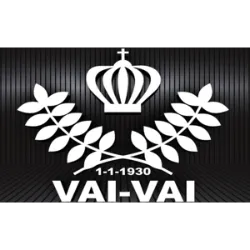
The Grêmio Recreativo Cultural e Social Escola de Samba Vai-Vai is one of the most traditional carnival associations in the city of São Paulo. Founded in 1930 by a group of friends in the Bixiga neighborhood, the school calls itself the "People's School" and has a rich and remarkable history in São Paulo's Carnival. The school originated from a group linked to the Cai-Cai football team, who decided to create a carnival cordon to liven up the games and parties. This group, known as "the Vae-Vae gang", gave rise to the Cordão Carnavalesco e Esportivo Vae-Vae, which later became the Vai-Vai samba school. With the colors black and white as a symbol, Vai-Vai parades with striking plots that often address relevant social and cultural themes.
publicity
Sociedade Rosas de Ouro

Sociedade Rosas de Ouro is a renowned samba school in the city of São Paulo, with a rich history and a successful trajectory in São Paulo Carnival. Founded in 1971, in the Brasilândia region, by a group of enthusiasts led by José Luciano Tomás da Silva, Rosas de Ouro quickly stood out in the city's carnival scene. The school's name was inspired by the "bouquet of Golden Roses", an honor instituted by Pope Gregory II in the 8th century to reward virtuous Catholic princesses. This name symbolizes the majesty of Christ and the sweet fragrance that his followers must spread, according to religious tradition. Since its first participation in the São Paulo Carnival in 1971, Rosas de Ouro has demonstrated constant growth. From 1975 onwards, the school ascended to the Special Group, where it conquered its space and became one of the powerhouses of the São Paulo Carnival.
The starting point for samba schools as we know them today o

The starting point for samba schools as we know them today occurred in 1928, with the founding of the first official samba school, Deixa Falar, by Ismael Silva, in the Estácio neighborhood. Deixa Falar was the precursor to the samba school parade during Rio Carnival. Over the years, samba schools became increasingly organized, developing administrative structures, such as boards, harmony departments, drums, wings and costumes. Competitions during Carnival became the highlight of the year for these schools, who began to parade on the Avenue, showing their artistic and cultural skills.
Mancha Verde

Mancha Verde is a Brazilian samba school located in the city of São Paulo. Its origins date back to the organized fan base Mancha Alviverde, associated with the Palmeiras football team. Founded in 1995, Mancha Verde began as a carnival group, but soon transformed into an official samba school. Mancha Verde's trajectory in São Paulo's carnival is marked by achievements and challenges. Over the years, the school has gained prestige and recognition, rising to the highest groups in the competition and winning important titles. Their parades are known for creative plots, vibrant performances and a strong connection with the culture and history of Palmeiras, their home club.
publicity
Samba schools have their roots in Afro-Brazilian culture and

Samba schools have their roots in Afro-Brazilian culture and originated in Rio de Janeiro, at the beginning of the 20th century. The emergence of samba schools is associated with the process of urbanization and migration of the black population to Brazilian cities, mainly to Rio de Janeiro, then the country's capital. Initially, samba schools were not formal institutions, but rather groups of people who came together to celebrate Afro-Brazilian culture through samba, dance and percussion. These meetings took place in spaces such as backyards, Candomblé temples and bars.
Grêmio Recreativo Escola de Samba Unidos de Vila Isabel

Grêmio Recreativo Escola de Samba Unidos de Vila Isabel, or simply Unidos de Vila Isabel, is one of the oldest and most respected samba schools in Rio de Janeiro, currently located on Boulevard 28 de Setembro, in the Vila Isabel neighborhood. Its main symbol is Princess Isabel's crown, at the top, representing nobility and history. The shield is divided into two parts: at the top, a rising sun with the inscription "GRESUVI" and a blue band, symbolizing the birth of the school; At the bottom, a treble clef, a tambourine and a bird feather are represented, which highlight the importance of music. Its official colors are blue and white, with a special shade of sky blue adopted by the Village. The school was officially established on April 4, 1946, in the backyard of Seu China's house, with the participation of several members of the community.
Acadêmicos do Tatuapé

Acadêmicos do Tatuapé is a renowned samba school in the city of São Paulo, located in the East Zone. Founded in 1952 under the name Unidos de Vila Santa Isabel, the school moved its headquarters to Rua Antonio de Barros in 1964, adopting the name by which it is currently known. Over the years, the school contributed significantly to the promotion of samba in the city, organizing events in Praça da Sé and standing out for its drums and the phrase "O Tatu que Anda also Samba. Viva o Bairro do Tatuapé!". Acadêmicos do Tatuapé faced challenges and moments of glory, consolidating itself as one of the most respected and competitive associations in the São Paulo carnival scene.
publicity
The association known as Grêmio Recreativo Cultural Escola d

The association known as Grêmio Recreativo Cultural Escola de Samba Independente Tricolor, or simply Independente Tricolor, has its origins in Torcida Tricolor Independente and Bloco Carnavalesco Independente, located at Rua Doze de Setembro, nº 259, Vila Guilherme, São Paulo. Initially as a block, Independente Tricolor began to participate in carnival parades as a Samba School after the end of its performances as a block. In the 2000s, Torcida Independente began planning its participation in the São Paulo Carnival, creating the Bloco Independente with its own statute. In 2003, after an incident involving members of Pavilhão 9 and Mancha Verde, the block was excluded from carnival by UESP. Years later, it became a samba school, debuting in 2010 as Grêmio Recreativo Cultural e Escola de Samba Malungos Independente.
The Grêmio Recreativo Cultural Escola de Samba Dragões da Re

The Grêmio Recreativo Cultural Escola de Samba Dragões da Real, established in 2000 by members of the São Paulo Futebol Clube fan base, had its origins in an initiative to promote culture and integration among members. In its first year, it faced financial challenges due to the lack of funds transferred by UESP, resulting in a significant mobilization of fans and associates to make the parade possible. In the following years, Dragões da Real demonstrated its rise by winning consecutively in 2003 and 2004, achieving the opportunity to parade at the Anhembi sambadrome. Its debut in the Access Group, in 2005, was marked by an impressive second place, pushing the school forward. In subsequent years, Dragões da Real showed its versatility with varied plots, from playful themes to tributes to Brazilian music.
Barroca Zona Sul, a samba school in São Paulo

Barroca Zona Sul, a samba school in São Paulo, has its roots in Vila Mariana, where the president of Vai-Vai, "Pé Rachado", lived. After going through several schools, Pé Rachado, encouraged by Cartola, founded Barroca Zona Sul in 1974, bringing together members in his home to create the new association. The school's name and colors were chosen in honor of Mangueira, where Cartola was an important figure. The name "Barroca" refers to Campo Barroca, where the neighborhood's batuqueiros used to gather for samba circles.
publicity
The Associação Cultural e Social Escola de Samba Mocidade Ca

The Associação Cultural e Social Escola de Samba Mocidade Camisa Verde e Branco, founded on September 4, 1953, is one of the oldest and most traditional samba schools in the city of São Paulo. The story dates back to 1914, when the Grupo Carnavalesco Barra Funda was created by Dionísio Barbosa, with men wearing green shirts and white pants. During the Estado Novo, they were mistaken for supporters of a political party and persecuted by the police, leading to the end of the parades in 1936. In 1953, Inocêncio Tobias reorganized the group, creating the Cordão Mocidade Camisa Verde e Branco. After winning the Cordão Parade in its first year, the school became champion four more times before becoming a samba school in 1972, winning its first title in 1974. Since its founding, the school has been led by members of the Family Tobias to this day.
Grêmio Recreativo Escola de Samba Unidos do Viradouro
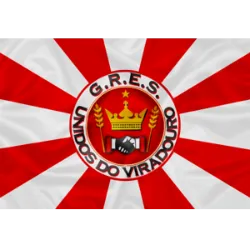
Grêmio Recreativo Escola de Samba Unidos do Viradouro, popularly known as Viradouro or Unidos do Viradouro, is a Brazilian samba group based in Niterói. It was founded on June 24, 1946 by Nelson Jangada, Nelson Braga, Roque Soares, Paulo Braga, Juci, Ataíde, Ercília Guedes, Maria Ana, Oto Braga, Telinho, Lindolfo dos Santos, Otacílio Nascimento, Ito Machado Villaça Guedes, among others . The school's symbols include a crown with sprigs of leaves at its side and an interracial handshake, symbolizing the unity of its members. Initially, Viradouro adopted blue and pink colors, inspired by the clothing of Our Lady Help of Christians, patron saint of the school. However, after having difficulty finding fabrics in the same tone for its fashion shows, the school decided to change its colors to red and white in 1971.
Grêmio Recreativo Escola de Samba Paraíso do Tuiuti

Grêmio Recreativo Escola de Samba Paraíso do Tuiuti, or Paraíso do Tuiuti, is a renowned samba group based in the city of Rio de Janeiro, Brazil. Originally from Morro do Tuiuti, located in the São Cristóvã neighborhood. Morro do Tuiuti's carnival tradition dates back to 1933, with the founding of Unidos do Tuiuti, the first local samba school. However, after a period of relative success, the school went into decline over the following decades and eventually became extinct. In 1954, after the dissolution of Unidos do Tuiuti and Paraíso das Baianas, Paraíso do Tuiuti emerged, founded by a group of samba dancers led by Augusto Pirulito, Joaquim, Araquem, and others. The name "Paraíso do Tuiuti" is a combination of the first two schools on the hill, and its colors, blue and yellow, were inherited from their predecessors. The school's symbol is a crown with a lyre at the tip, adorned with laurel branches.
publicity
Grêmio Recreativo Escola de Samba Portela

Grêmio Recreativo Escola de Samba Portela, known simply as Portela, is an institution in Rio de Janeiro that stands out in the Brazilian samba scene. Recognized by its eagle symbol and blue and white colors. Affectionately called "The Majesty of Samba", she is part, together with Deixa Falar and Mangueira, of the pioneering schools of Rio carnival. Its history dates back to 1923, when it was founded as a carnival group called Conjunto Oswaldo Cruz. Initially located in the Oswaldo Cruz neighborhood, the school went through some name changes until it definitively adopted the name Portela in the 1930s. Portela is recognized for being a breeding ground for great samba composers and musicians, such as Paulo da Portela, Clara Nunes , Paulinho da Viola and Marisa Monte, among others.
The Grêmio Recreativo Escola de Samba Acadêmicos do Grande R

The Grêmio Recreativo Escola de Samba Acadêmicos do Grande Rio, known as Grande Rio. The history of samba schools in Duque de Caxias dates back to the 1950s, with the participation of Cartolinhas de Caxias. This school merged with others in 1971 to create GRES Grande Rio. In 1988, local samba dancers founded Acadêmicos de Duque de Caxias, which later joined Grande Rio, giving rise to the current association, whose symbol includes a crown, a drum and Reduc (Duque de Caxias Refinery). United of tijuca. Its community is known for its engagement and passion, contributing to the success of the association.
Beija-Flor de Nilópolis

Beija-Flor de Nilópolis is one of the most traditional samba schools of the Rio de Janeiro Carnival. Founded on December 25, 1948 by a group of friends led by Helles Ferreira da Silva. The school had its roots in the Nilópolis neighborhood, in Baixada Fluminense. The name "Beija-Flor" came from Dona Eulália, mother of Negão da Cuíca, the president of the block, who proposed the name Beija-Flor. This idea was inspired by Rancho Beija-Flor, which Dona Eulália used to parade when she was younger in the city of Valença, in Rio de Janeiro. The choice of blue and white colors has two versions: one says it was a tribute to Nilópolis, which adopted these colors in its flag when it became an independent city and the other version suggests inspiration from the Israeli flag. The Hummingbird is nicknamed "Goddess of the Catwalk" and "Wonderful and Sovereign".
publicity
Unidos do Porto da Pedra

Unidos do Porto da Pedra is a samba school founded in 1978 in the Porto da Pedra neighborhood, in São Gonçalo, metropolitan region of Rio de Janeiro, from a football team. The story began in the seventies, when a local football club, Porto da Pedra Futebol Clube, formed by residents of the neighborhood, gave rise to a street block that paraded in 1975 and 1976. On March 8, 1978, the block it was officially named Bloco Carnavalesco Porto da Pedra, later becoming a samba school. Its colors are red and white, and its symbol is the tiger. In addition to its success at Carnival, Porto da Pedra also carries out social and cultural activities in São Gonçalo.
Imperatriz Leopoldinense
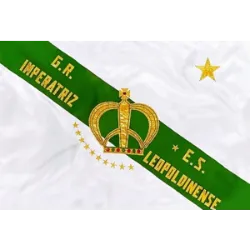
Imperatriz Leopoldinense is a samba school in Rio de Janeiro founded on March 6, 1959 in the Ramos neighborhood, by the pharmacist Amaury Jório and a group of local samba players, the school has its roots in the Leopoldina Zone and in the old association Recreio de Ramos . The name of the school is a tribute to the Leopoldina Railway, which ran through Ramos, and to Empress Maria Leopoldina of Brazil. Its colors, green and white, were chosen in reference to the Serrano Empire, its mother school and its symbol is the imperial crown. Under the leadership of carnival performers such as Arlindo Rodrigues and Rosa Magalhães, the Imperatriz became known for its technical excellence, winning important titles over the decades.
Salgueiro

Salgueiro is one of the most prestigious samba schools in Rio de Janeiro and one of the oldest in activity. Founded on March 5, 1953, in the Andaraí neighborhood, its headquarters are on Rua Silva Teles, in Tijuca, the neighborhood where it also parades. The school colors are red and white. Among his memorable plots are "Xangô" (1969), "Chico Rei" (1971), "O Rei de França na Ilha da Assombração" (1993) and "Do Fundo do Quintal, Saberes e Sabores na Sapucaí" (2009). Salgueiro's drums, known as "Furiosa", are one of the most revered drums of the Rio carnival. Figures such as Arlindo Rodrigues, Rosa Magalhães, Joãosinho Trinta and others, began their careers at Acadêmicos do Salgueiro, under the influence of Fernando Pamplona, known as "the father of all carnival artists". The school is called "Academia do Samba".
publicity
Estação Primeira de Mangueira, or simply Mangueira

Estação Primeira de Mangueira, or simply Mangueira, is one of the oldest and most emblematic samba schools in Rio de Janeiro. Founded on April 28, 1928 in Morro da Mangueira, close to Maracanã. The foundation of the school dates back to a meeting held at Terreiro de Tia Fé, an important figure in the history of Morro da Mangueira, involving names such as Cartola, Zé Espinguela, among others, who started the Bloco Estação Primeira de Mangueira, later transformed into a school for samba.. Mangueira was a pioneer in creating a wing of composers, including women, and maintains a unique tradition in its drums, with the exclusive use of the first-rate deaf player. Its green and pink flag and its symbol, the candango, are recognized throughout Brazil.
Mocidade Independente de Padre Miguel

Mocidade Independente de Padre Miguel is a samba school founded on November 10, 1955 by a group of amateur football enthusiasts. The school's growth was boosted from the 1970s, when it received sponsorship from bicheiro Castor de Andrade. The neighborhood of Padre Miguel, in the West Zone of Rio de Janeiro, is the place of origin of Mocidade Independente, and its name refers to this region. He stood out for his creative parades, excellence on the drums and winning several titles. Its colors are green and white. In addition to its success at Carnival, Mocidade also carries out social projects in its community.
Back
